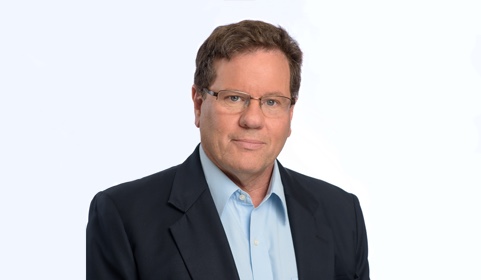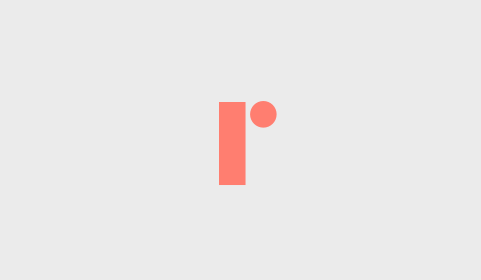Indian Supreme Court Rejects Novartis’ Gleevec Patent Application

On April 1st, 2013 the Supreme Court of India has dismissed Novartis’ patent application covering the active agent of the blockbuster anti-cancer drug Gleevec1. This judgment adds to several other recent decisions in India unfavorable to pharmaceutical patents and elevates the concerns of the ethical pharmaceutical industry on the inability to protect rights of several pharmaceutically-related inventions in this growingly important pharmaceutical market.
Imatinib (N-phenyl-2- pyrimidine-amine), developed in Ciba Geigy, later Novartis, and marketed as Gleevec® in the U.S. or Glivec®2in some other countries, is a competitive tyrosine-kinase inhibitor used in the treatment of some types of cancers, most notably Philadelphia chromosome-positive (Ph+) chronic myelogenous leukemia (CML). About 16,000 patients are treated by Gleevec, out which about 95% receive the drug free of any charge under Novartis’ compassionate use program.3 There are also generic versions of the drug on the market in India and the majority of the patients – 300,000 patients – are treated by the generic versions.4
A patent application (that was referred to in the judgment as the Zimmermann patent), covering a variety of molecules, including Imatinib, was submitted in 1993 in several countries but not in India.5 Later in 1998 Novartis filed another application covering imatinib in its mesylate salt form (specifically the β-form of imatinib), processes for manufacture and use thereof (filing date: July 1998). This application was filed in India under the “black box” procedure.6
The patent application for the crystal form of imatinib mesylate included several comparative examples showing mainly manufacturing and storing advantages of the salt form.7 An opposition was lodged against the application by several Indian generic drug manufacturers including NATCO Pharma Ltd., CIPLA Ltd. Ranbaxy Laboratories Ltd., Hetro Drugs Ltd. and also by the Cancer Patients Aid Association. First the patent office and then the High Court of Madras dismissed the application, indicating that it did not satisfy the local Patent Law requirements for novelty and inventive step. Later, the Intellectual Property Appellate Board (IPAB) has agreed to grant of only the process claims for manufacturing the β-form of imatinib. Novartis appealed to the Indian Supreme Court.
At the center of the Judgment was Section 3(d)8of the Indian Patent Law. This section, which has a significant effect on patents in the pharmaceutical and biotechnology field in India, was introduced into the law in 2005 in response to pressure from the local generic industry. This Section 3(d) removed from patent-eligibility new forms of a known substance “which does not result in the enhancement of the known efficacy of that substance” as well as new medical uses of known active pharmaceutical ingredient (API).
One of the main focuses in the Indian Supreme Court’s decision related to the question of whether the patent qualifies as a “new product” which comes by through an invention that has a feature that involves technical advance over the existing knowledge and that makes the invention “not obvious” to a person skilled in the art”.9
In analyzing the patent and the regulatory history of Gleevec the Court concluded the drug directly emanated from the first Zimmermann patent and that the superiority of the new crystalline form was insufficient to meet the standards of section 3(d):
“[I]t must be held that on the basis of the materials brought before this Court, the subject product, that is, the beta crystalline form of Imatinib Mesylate, fails the test of section 3(d), too, of the Act.”10
The Court left, however, a room for other “incremental” inventions in stating that
“…the beta crystalline form of Imatinib Mesylate, does not qualify the test of Section 3(d) of the Act but that is not to say that Section 3(d) bars patent protection for all incremental inventions of chemical and pharmaceutical substances.11
This judgment is the latest in a series of decisions in India that were contrarian to the interests of international ethical pharmaceutical companies. This includes the December 2012 decision by the Indian Patent Office to revoke Merck’s patent relating to an asthma drug; IPAB’s November 2012 decision to revoke Roche’s patent covering Pegasys®, used for treatment of Hepatitis C, Hepatitis B and some other liver conditions; the Indian Patent Office’s March 2012 decision to grant a compulsory license to Natco under Bayer’s patent covering its drug Nexavar® used for the treatment of liver and kidney cancer; and others.
It should be noted that many important pharmaceutical inventions are of the kind which seems to be banned by Section 3(d) of the Indian patent law (and which are permitted in many, if not most, industrialized countries), which leads to the inevitable conclusion that the patent regime in India does not favor patents in the pharmaceutical field; and even if granted such patents are susceptible to compulsory licensing.
1 The drug’s worldwide sales in 2012 of that drug were close to US$ 5 billion.
2 We will use the name Gleevec to relate to this drug.
3 Novartis contended that it gave out $1.7 billion of the drug free of any charge and was satisfied with the $89.5 million in revenues from the 5% paying patients.
4 The monthly treatment costs per patient for Gleevec are about $2,200. The costs for the generic version are about $145, about 1/15th of the price of the branded drug.
5 At that time the law in India did not permit patent protection on pharmaceutical inventions and for this reason no patent application was filed in India. The WTO (World Trade Organization) agreement was signed in 2004 and came into effect in 1 January 1995. This agreement, of which India is a member, has a significant intellectual property section known as TRIPS that defined minimum IP protection standards for intellectual property, including patents. Among others it included an obligation of member states to provide patent protection on pharmaceuticals. Countries like India had a 10-years’ transition period until 1 January, 2005 to change its law in compliance with TRIPS.
6 The Indian Patent Office provided a “black box” procedure that enabled filing of patent applications on pharmaceutical invention prior to 2005 that were placed into that “black box” that were then examined after 1 January 2005 under the patentability standards of the revised law.
7 These comparisons were made vis-à-vis the other crystal form of imatinib, the a-form, and not to the free base or amorphous form of the drug. Further, as also noted in the decision, the application indicated that the pharmacological effect of the β-form of imatinib are similar to the effect of the free base
8 The following is the language of Section 3(d):
“Section 3. What are not inventions.- The following are not inventions within the meaning of this Act,-
(d) the mere discovery of a new form of a known substance which does not result in the enhancement of the known efficacy of that substance or the mere discovery of any new property or new use for a known substance or of the mere use of a known process, machine or apparatus unless such known process results in a new product or employs at least one new reactant.
Explanation.-For the purposes of this clause, salts, esters, ethers, polymorphs, metabolites, pure form, particle size, isomers, mixtures of isomers, complexes, combinations and other derivatives of known substance shall be considered to be the same substance, unless they differ significantly in properties with regard to efficacy.
9 Clause 3 of the judgment.
10 Clause 190 of the judgment
11 Clause 191 of the judgment
This article is provided for general information only. It is not intended as legal advice or opinion and cannot be relied upon as such. Advice on specific matters may be provided by our group’s attorneys.

